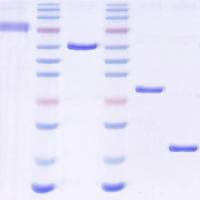NMR Spectroscopy: Structure Elucidation of Cycloelatanene A: A Natural Product Case Study
互联网
544
The structure elucidation of new secondary metabolites derived from marine and terrestrial sources is frequently a challenging task. The hurdles include the ability to isolate stable secondary metabolites of sufficient purity that are often present in <0.5 % of the dry weight of the sample. This usually involves a minimum of several chromatographic purification steps. The second issue is the stability of the compound isolated. It must always be assumed when dealing with the isolation of natural products that the compound may rapidly degrade during and/or after the isolation, due to sensitivity to light, air oxidation, and/or temperature. In this way, precautions need to be taken, as much as possible to avoid any such chemical inter-conversions and/or degradations. Immediately after purification, the next step is to rapidly acquire all analytical spectroscopic data in order to complete the characterization of the isolated secondary metabolite(s), prior to any possible decomposition. The final hurdle in this multiple step process, especially in the acquisition of the NMR spectroscopic and other analytical data (mass spectra, infrared and ultra-violet spectra, optical rotation, etc.), is to assemble the structural moieties/units in an effort to complete the structure elucidation. Often ambiguity with the elucidation of the final structure remains when structural fragments identified are difficult to piece together on the basis of the HMBC NMR correlations or when the relative configuration cannot be unequivocally identified on the basis of NOE NMR enhancements observed. Herein, we describe the methodology used to carry out the structure elucidation of a new C16 chamigrene, cycloelatanene A (5 ) which was isolated from the southern Australian marine alga Laurencia elata (Rhodomelaceae). The general approach and principles used in the structure determination of this compound can be applied to the structure elucidation of other small molecular weight compounds derived from either natural or synthetic sources.









